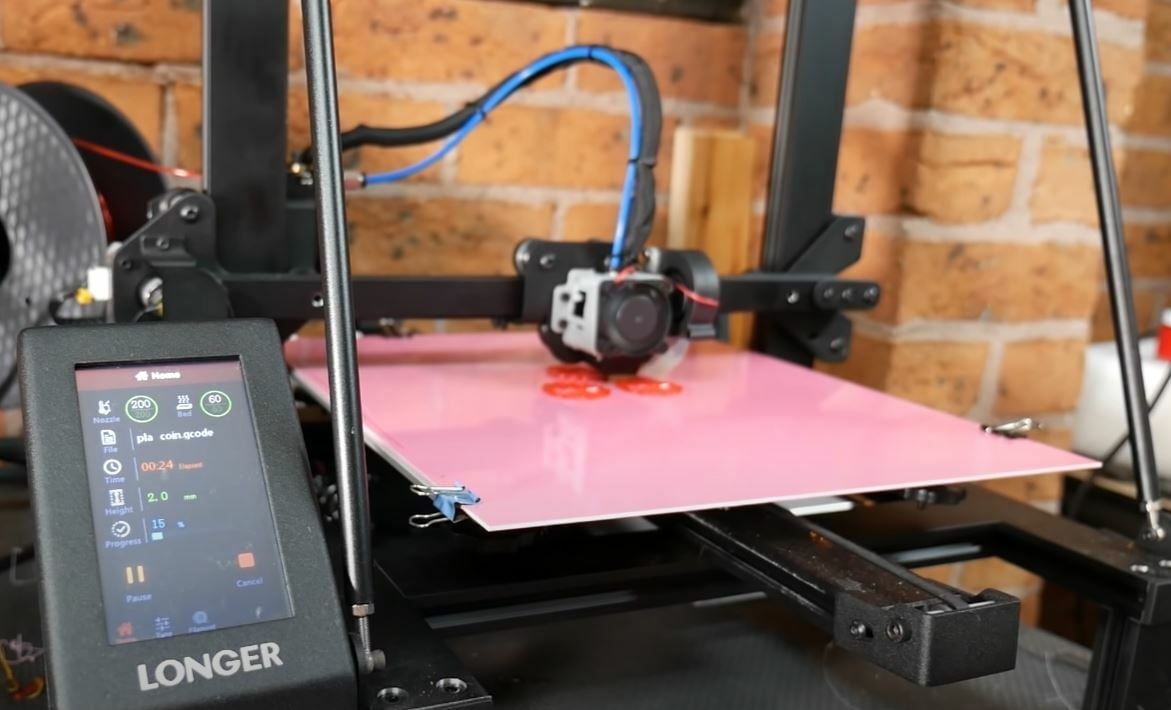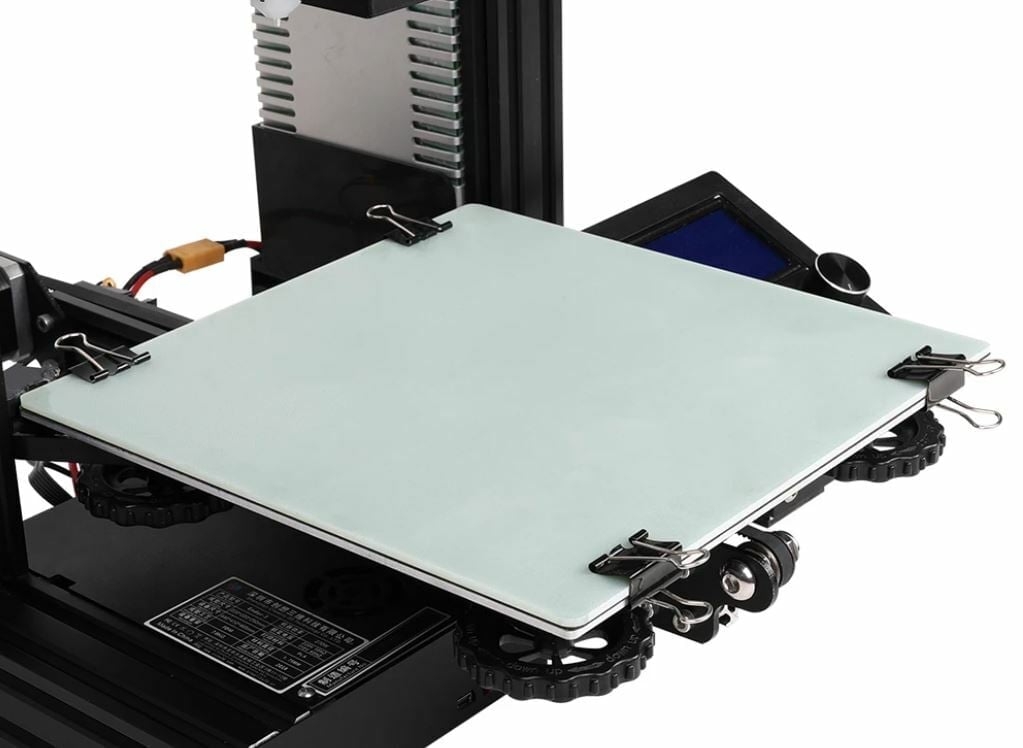G10/FR4

G10 is inexpensive and works with basically any filament material.
G10 is a lesser-known bed material that some users are very passionate about. Also known as Garolite or FR4, G10 is a special type of plastic that’s very similar to carbon fiber in some of its physical properties, but at a fraction of the cost. In fact, G10 is perhaps the least expensive build plate option on this list, costing only a little over $10 for a 12 x 12-inch sheet.
Furthermore, G10 is rigid and very durable, so you won’t have to worry about accidentally breaking the surface. The best part about G10 is its excellent surface adhesion with 3D printing materials, including PLA and PETG; it’s also considered one of the best materials for printing nylon.
Features: Very inexpensive, durable, provides consistent and reliable bed adhesion
Compatible materials: PLA, ABS, ASA, PET, PETG, TPU, nylon
Examples: Garolite, USA Sealing Inc.
Price range: Rs 200 – 1000
Polypropylene

A polypropylene bed is a semi-flexible sheet of plastic (Source: AliExpress)
Another plastic bed material that’s worth taking a look at is polypropylene. Polypropylene, sometimes abbreviated as PP, is a translucent plastic that’s pretty inexpensive as a build plate, costing only around $20 for a 235 x 235-mm surface. Especially when sold as a thin sheet, polypropylene build plates are semi-flexible, meaning you should be able to bend them a little to remove prints.
Build plates made from this plastic material are also temperature resistant and can be used with bed temperatures as high as 120 °C. And because plastic bonds strongly to other plastics, polypropylene is a great printing surface option for most 3D printable materials, such as PLA, ABS, PETG, and even polypropylene (because you can also 3D print this material).
Unfortunately, polypropylene beds are known to scratch easily, and any defects to the bed are likely to be shown on the bottom of prints. On a similar note, some users have experienced warping and other deformations to the bed, which is a natural occurrence for plastics when they’re repeatedly heated and cooled. If this happens, you’ll probably have to purchase a new bed to ensure that your print bed doesn’t change height throughout a print, risking a failed print.
Features: High-temperature resistance, semi-flexible for easy part removal, inexpensive
Compatible materials: PLA, ABS, PETG, PC, TPU, nylon, polypropylene
Examples: MatterHackers’ LayerLock, Mamorubot, HT1
Price range: Rs 2000-5000